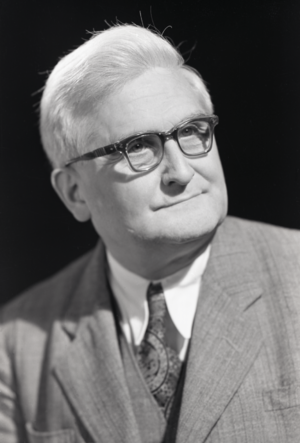László Kalmár facts for kids
László Kalmár was a famous Hungarian mathematician and professor. He was born on March 27, 1905, in Edde, and passed away on August 2, 1976, in Mátraháza. Many people consider him the founder of mathematical logic and early computer science in Hungary.
His Life Story
László Kalmár had a challenging start to life. His father passed away when he was young. Then, when he was 17, his mother also died, just as he was starting at the University of Budapest. This meant he was on his own.
Even with these difficulties, Kalmár showed great talent in school. At the University of Budapest, he learned from important teachers like Kürschák and Fejér. One of his classmates was Rózsa Politzer, who later became a famous logician named Rózsa Péter. Kalmár finished his studies in 1927. He discovered his passion for mathematical logic during a visit to Göttingen in 1929.
After earning his doctorate, he began working at the University of Szeged. This university had moved to Szeged in 1920, after World War I. Before that, it was a big Hungarian university in Kolozsvár (now Cluj in Romania). When mathematicians like Haar and Riesz joined, Szeged became a major center for math research. Kalmár started as a research assistant to them.
In 1947, Kalmár became a full professor at Szeged. He was the first person to hold the special position for the Foundations of Mathematics and Computer Science. He also started Szeged's Cybernetic Laboratory and a research group for mathematical logic and automata theory.
His Work in Mathematics and Computers
László Kalmár did important work in mathematical logic. He showed that some types of math problems could be "decidable," meaning you could always find a solution using a set of rules. He also worked on different ways to define primitive recursive arithmetic, which is a basic way of understanding how numbers work.
Kalmár was very keen on promoting computers and computer science in Hungary. He wrote about many topics in theoretical computer science. This included how programming languages work, how computers can fix their own errors, and how computers could be used for things other than just numbers. He also explored the strong connection between computer science and mathematical logic.
Kalmár was one of the few logicians who questioned Church's thesis. This idea suggests that all problems that can be solved step-by-step by a machine can also be solved using special mathematical functions called recursive functions.
Kalmár received many honors for his work. He became a member of the Hungarian Academy of Sciences in 1949. He was also awarded the Kossuth Prize in 1950 and the Hungarian State Prize in 1975.
In 1933, Kalmár married Erzsébet Arvay, and they had four children.
Elementary Functions Explained
Kalmár helped define what are called elementary functions. These are special number-theoretic functions, which means they work with natural numbers (like 0, 1, 2, 3...). You can build these functions using simple ideas like combining functions, using variables, and starting with the numbers 0 and 1. They also involve basic math operations like adding, subtracting (in a specific way), and doing sums or products within certain limits.
A mathematician named Schwichtenberg showed that all elementary functions can be calculated by a simple computer model called a register machine. This means these functions are well-defined and can always give an answer.


